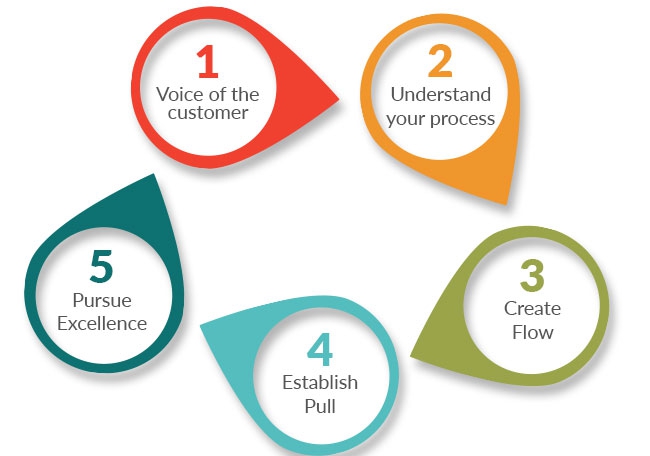
Features
Business
Marketing
Applying ‘Lean’ to Retail Sales
Developing Toolsets to Improve Customer Service and Boost Sales
July 13, 2015 By Dale Schattenkirk
 Lean focuses on five key principles.
Lean focuses on five key principles. August 2015 — Can “Lean” help us improve revenue in the retail space of a garden centre?
Lean is a quality improvement methodology that is built on the foundation of Respect for People. Lean, when properly applied, focuses on five key principles as can be seen in the accompanying diagram. This article will focus on the first two principles.
The first principle is: Understand the Voice of the Customer. This is completed by first identifying who your customer is, and by categorizing value from their perspective. Typically, a value-added activity is something that must meet these three criteria:
- The customer would be willing to pay for it.
- Something “physical” is done to change the product or service.
- The process is done correctly the first time, without need for re-work.
The second principle is to Understand your Process. Understanding your process means to identify what work is completed to achieve the required Voice of the Customer. The process mapping toolset allows you to have a picture of your process so you can begin making improvements.
Without process mapping, it is difficult to have transparency and see where the processes may not match the voice of the customer. It also helps the team gain an understanding of everyone’s role in the process.
There are five different types of process maps – you do not need to do all of them, just the ones that help you understand your process.
So how does knowing these principles help increase revenue? The first step is to create a method to identify who your customer is. You may say “that’s simple – it’s the people coming through the door.” The fact of the matter is the person coming through the door may be the intermediary between your shop and the actual person receiving the product.
For example, the person may be buying something for someone else as a gift or someone who is not able to come to the location themselves.
Circulating a simple survey to know who your customer is allows you to tailor your products to what they want. If you sell a lot to customers for gifts then you can also look at cards, wrapping, balloons, etc., to increase your diversity and revenue. This would be identified as value to a customer by creating a single point of purchase.
Additionally, garden centres could survey customers and ask what they look for in plant types, fertilizers, self-help books, and – if you are large enough – maybe even garden tools. Understanding the customers’ needs allows you to set up your product line to match those needs.
Once you have identified the customers’ needs, then the second principle focuses on how you deliver the items identified as value-added to the customer. This is done through process mapping and asking the “five whys.”
This critical evaluation allows you to identify if you are putting your resources into the things customers want from you, or into non-value added work that is draining your resources. During this stage, reviewing your metrics, annual sales and completing trending analysis allows you to understand what you should increase promoting for and what items you should remove from the product line.
The two first principles ensure you focus on the customers’ needs and understand how your processes fulfill those needs. Once you have completed these two actions, moving into the Lean tool box to make the appropriate changes allows you to improve your processes and margin in an expedient manner.
Dale Schattenkirk is president and CEO of LTS Consulting. He is a Lean Six Sigma Master Black Belt and a Certified Human Resource Professional. ltsee.com
Print this page